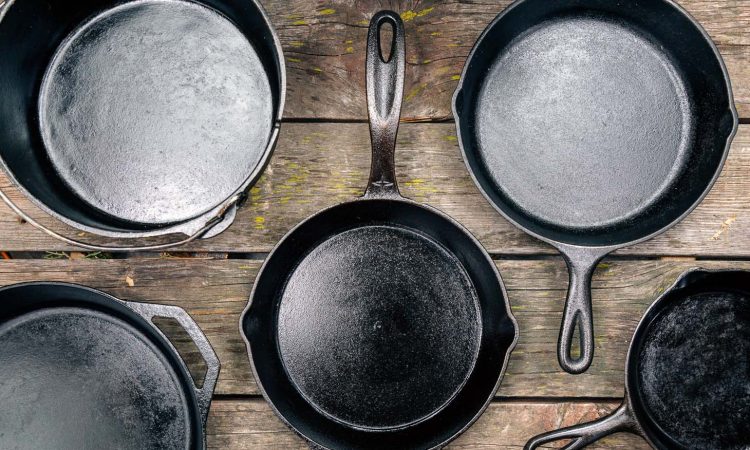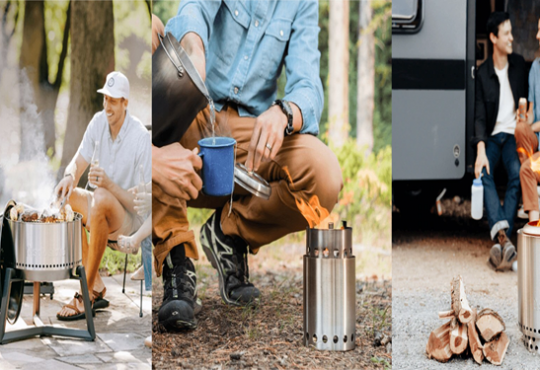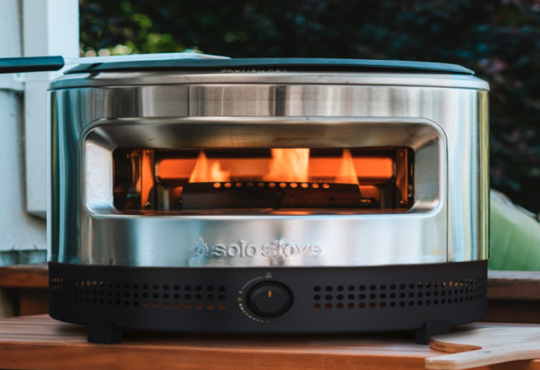
A lot of people want to know how to season a cast iron skillet. But, there are a few things to keep in mind when doing it. For starters, you have to be careful not to over season the pan. Instead, you should try to add thin layers of seasoning. In addition, you should also use a good oil. It’s best to use Canola or Flaxseed oil, as they’re both very healthy.
Layer of Baked-On Fat
If you have a cast iron skillet that is starting to lose its nonstick properties, you may want to consider re-seasoning it. Seasoning is a process that adds a layer of baked-on fat to the surface of the pan. It is a way to protect the metal from rust and improve its non-stick properties.
Type of Vegetable Oil
There are a number of oils you can use to season your skillet. The most commonly used oil is canola. This is a type of vegetable oil that has a mild taste and high smoke point.
Popular oil is coconut oil. Coconut oil has been around for centuries and has many health benefits. However, you should be aware that it is not as durable as other oils.
Other oils you can try include flaxseed oil and grapeseed oil. These are a little more expensive but promise to have the longest polymerization time and produce the best results.
Non-Stick Properties
Re-seasoning cast iron is a great way to extend the life of your cookware with the Solo Stove Promotional Code. When you re-season it, you will notice that the non-stick properties are more stable. Using the right oil will also help you avoid burning the food you are cooking.
Before you begin, make sure your cookware is clean. Use a nylon scrubber or a liquid soap gel to remove any odors. You should also be prepared to let the pan sit for at least 30 minutes. Be careful not to overheat it, as this could cause the seasoning to burn off.
Once you have completed the seasoning process, you should store your cast iron pan on the stove top with a hanger. Alternatively, you can put it in a dry cupboard.
Higher-Smoke-Point Oil
The key to seasoning cast iron is to use the proper oil. For the best results, you should choose a higher-smoke-point oil, such as canola.
You should also remember to re-season your pan every year. Not only will it make it more non-stick, but it will also extend the life of your pan. With proper care, your cookware will last for decades.
Omega-3 Fatty Acids
If you’re looking for a way to season cast iron skillets, look no further than flaxseed oil. Flaxseed oil contains more than five times the amount of omega-3 fatty acids as vegetable oil. It also has a low smoke point, making it ideal for use with cast iron.
First, you’ll need to choose the right type of flaxseed oil. Make sure it’s organic and doesn’t contain additives. You can find flaxseed oil online and in the vitamins and supplements section of most grocery stores.
Solid Matrix
Next, you’ll need to heat up the pan in a 500 F oven for about 2 hours. This will open up the pores of the pan, allowing the fatty acids to combine and form a solid matrix.
After two hours, remove the pan from the oven and leave it in a cool area. To make the process easier, you can use a paper towel to rub the oil into the pan.
Seasoned Cast Iron Skillet
You can also brush the flaxseed oil into the pan with tongs. Repeat this process five times. Then, you can place the seasoned cast iron skillet in the refrigerator.
Once you’re ready to cook with your new pan, make sure to clean it. Cast iron pans have a tendency to retain moisture, so be careful when cleaning them. Using a mild abrasive sponge won’t impact the finish.
In addition to flaxseed oil, there are many other oils that you can use to season your cast iron. Avocado oil, grapeseed oil, and canola oil are all great choices.
Season One or Two Pans
As with any other oil, the best choice for you will depend on your needs. For instance, if you only need to season one or two pans, you may prefer to use bacon drippings or Crisco. But, if you need to season a lot of pans, you’ll want to look for an oil with a higher smoke point.
Seasoning cast iron with flaxseed oil is not a quick task. However, it’s well worth the time and effort. You’ll end up with a smooth, non-stick surface that can be used for years.
Acidic Foods can Eat Away at Seasoning
If you’re going to use a cast iron skillet, you should know what you’re getting into. Acidic foods can strip the seasoning off of the pan and make the food taste metallic. You also want to make sure you don’t cook the food too long or too often. Cast iron is not a good choice for delicate foods like fish. Fortunately, most cast iron pans can stand up to a little acid.
Some newer cast iron skillets don’t get their start with enough seasoning. The best way to ensure that you have the right amount of seasoning is to buy a pre-seasoned skillet. That way, you’re not stuck with a dull, scalding piece of metal.
To get the most out of your cast iron skillet, you should try to avoid cooking high acidic foods. This is because the acids will break down the metal molecules in the pan, giving the food a metallic taste. Alternatively, you can try cooking them in a separate pan or in a slow cooker.
Effective Cleaning
As you cook, don’t forget to clean your pan. A hot water and soap rinse isn’t a bad idea, although you can probably do that without soap. For a more effective cleaning, consider using a stiff brush or a rag.
While you’re at it, consider rotating your cast iron cookware. Doing this will help to prevent the pan from warping or sticking. Another option is to purchase a cast iron pan that already has a protective layer of oil on it.
Dangers of Acidic Foods
Of course, you’re probably not going to be using your cast iron to cook acidic foods forever. In fact, you should re-season your cookware as soon as you can. This will not only prevent your cookware from breaking down, it will help to protect your family from the dangers of acidic foods.
One other thing to keep in mind is that old and heavily-seasoned pans will leach less iron than their newer counterparts. They are also more likely to hold up to heavy usage in the kitchen.
Lastly, the old adage, “Don’t let the cat out of the bag”, may apply to your cast iron cookware. Make sure you don’t cook your acidic foods for too long or they’ll chip away at the surface of your pan and take out the seasoning.
Layers of Seasoning on Cast Iron Skillets
The layers of seasoning on cast iron skillets are built up over time. The first thin layer helps create a base layer, while the additional layers help protect the pan from rusting and provide a smooth cooking surface.
Aside from the non-stick property, cast iron also has the ability to be cleaned and reused. This makes it a good option for replacing expensive, non-stick cookware. Depending on the manufacturer, new cast iron cookware can come pre-seasoned. But the natural coating will wear away over time. To restore the seasoning on a cast iron skillet, you need to follow a few steps.
400 Degree Cooking
First, you need to find the right oil for seasoning your skillet. Ideally, you want an oil that has a higher smoke point than the temperature you will be cooking at. For example, olive oil with a 350 degree smoke point is not suitable for 400 degree cooking.
Multipurpose Neutral Flavor Oil
Next, you will need to apply a thin layer of oil to the skillet. You can either use cooking oil or a neutral flavor oil. Using a multipurpose neutral flavor oil will prevent any of the food you are cooking from imparting flavors to the seasoning.
When the oil is applied, you need to make sure that it does not drip. Once you are done, place the skillet upside down in the oven for one hour.
While you are in the oven, you need to turn the pan to avoid any of the oil pooling. After an hour of baking, your skillet should have a dark matte finish.
Once you have completed this step, you will need to add more layers of seasoning to your cast iron skillet. In order to do this, you will need to heat the skillet to 450 to 500 degrees.
Final Words:
After a few uses, you will notice a thicker layer of seasoning. This is due to the more frequent cooking you have been doing. This can make the cooking experience easier and more efficient.
Seasoning your cast iron is simple and safe. It gives your skillet a natural easy-release finish.








